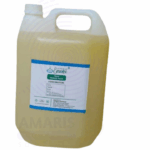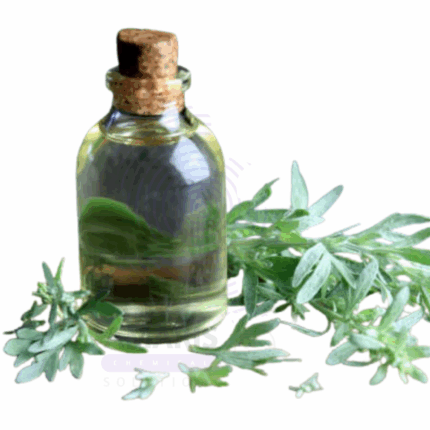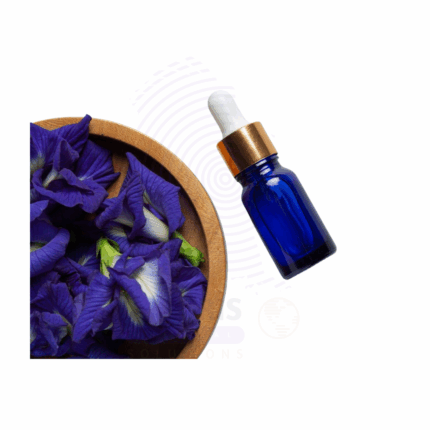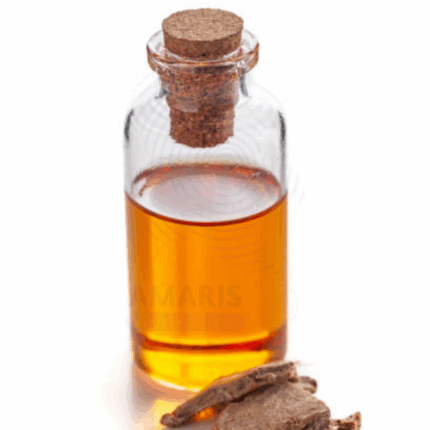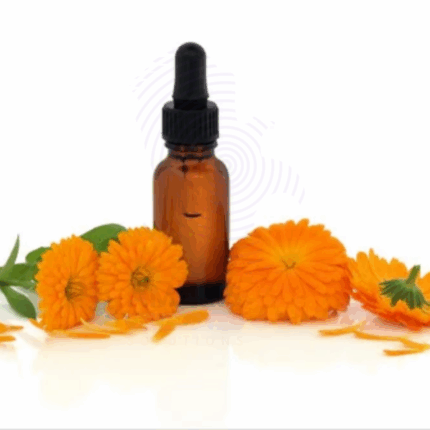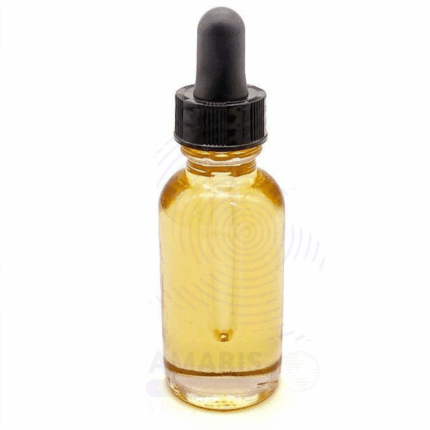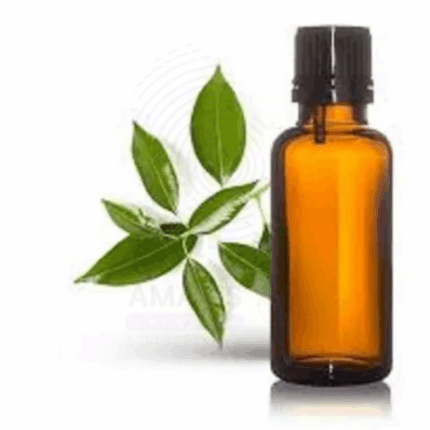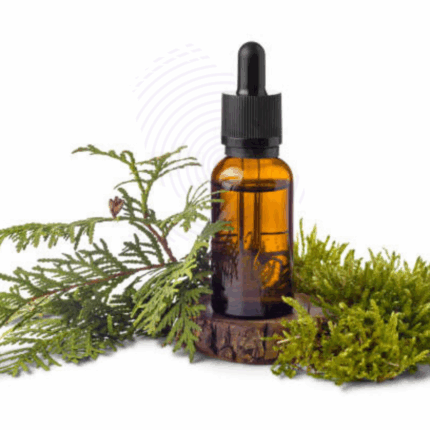
Thyme Oil
$ 37.79 Original price was: $ 37.79.$ 37.69Current price is: $ 37.69.
Thyme Oil is a potent essential oil obtained by steam distillation from the leaves and flowering tops of the Thymus vulgaris plant, native to the Mediterranean region. Known for its warm, herbaceous, and slightly spicy aroma, Thyme Oil contains key bioactive compounds such as thymol, carvacrol, and linalool. These constituents contribute to its powerful antimicrobial, antiseptic, anti-inflammatory, and antioxidant properties. Traditionally used in herbal medicine for respiratory ailments, digestive support, and wound healing, Thyme Oil is now widely applied in aromatherapy, cosmetics, natural health products, and cleaning formulations. Its effectiveness and aromatic complexity make it an essential ingredient across diverse industries.
Thyme Oil
Primary Uses
- Aromatherapy & Wellness
- Diffused or inhaled to support respiratory health and alleviate congestion
- Used in massage blends for muscle soreness, joint pain, and fatigue relief
- Incorporated into blends to boost immunity and promote mental clarity
- Applied in natural remedies for digestive comfort and stress reduction
- Cosmetics and Personal Care
- Added to skin care products for its antiseptic and cleansing properties
- Used in acne treatments and oily skin formulations to reduce inflammation and bacteria
- Included in shampoos and scalp treatments to combat dandruff and balance scalp health
- Incorporated in deodorants and foot care products for odor control and skin freshness
- Topical Applications
- Diluted and applied as an antimicrobial chest rub for respiratory relief
- Used in compresses or salves for wound care, insect bites, and minor skin infections
- Applied in natural insect repellent sprays and creams
- Used in anti-inflammatory and pain relief balms
Secondary Uses
- Cleaning and Detergent Products
- Added to natural household cleaners and disinfectants for antimicrobial effectiveness
- Used in air fresheners and fabric sprays for a fresh, herbaceous scent
- Incorporated in laundry detergents for deodorizing and cleansing action
- Fragrance and Ambient Scenting
- Used as a middle or top note in herbal, spicy, or fresh fragrance blends
- Blended into scented candles and room sprays to create invigorating indoor atmospheres
- Applied in natural perfumes with fresh, green, and aromatic accords
- Industrial and Specialty Applications
- Employed in natural pesticide and fungicide formulations due to antimicrobial properties
- Used in specialty pharmaceutical products and natural health supplements
- Incorporated in therapeutic ointments and topical formulations
| PACK SIZE |
5kg |
|---|
1. Basic Identification Attributes
- Botanical Name: Thymus vulgaris
- Common/Trade Name: Thyme Oil
- INCI Name: Thymus vulgaris Oil
- CAS Number: 8007-46-3
- HS Code: 3301.29
- Synonyms: Garden Thyme Oil, Common Thyme Oil
2. Physical & Chemical Properties
- Physical State: Liquid essential oil
- Color & Odor: Clear to pale yellow; warm, herbaceous, spicy aroma
- Solubility: Insoluble in water; soluble in alcohol and fixed oils
- Refractive Index: 1.490 – 1.520
- Specific Gravity: 0.900 – 0.940
- Main Components: Thymol, carvacrol, p-cymene, linalool
3. Safety & Hazard Attributes
- GHS Classification: May cause skin irritation and sensitization; avoid direct contact and prolonged exposure
- Toxicity: Use with caution; toxic if ingested in large amounts; external use only
- Exposure Limits: Refer to Safety Data Sheet (SDS)
- Allergen Information: Contains allergens such as thymol and linalool
4. Storage & Handling Attributes
- Storage Conditions: Store in a cool, dry, dark place away from heat and sunlight
- Container Type: Amber glass or aluminum containers with airtight seals
- Shelf Life: 18 to 24 months under proper storage conditions
- Handling Precautions: Use gloves and protective eyewear; avoid inhalation and skin contact
5. Regulatory & Compliance Attributes
- Produced in GMP-compliant facilities
- Compliant with IFRA standards for fragrance use
- Not classified as hazardous for transport under regulated packaging
6. Environmental & Health Impact
- Biodegradability: Biodegradable in the environment
- Ecotoxicity: Low aquatic toxicity at typical use concentrations
- Bioaccumulation: Not expected to bioaccumulate
Safety Handling Precautions
- PPE Required: Gloves, eye protection, and adequate ventilation during handling
- Handling Guidelines: Avoid inhalation and skin exposure; work in ventilated areas
First Aid Measures
- Inhalation: Move to fresh air; seek medical help if symptoms persist
- Skin Contact: Wash thoroughly with soap and water; discontinue use if irritation develops
- Eye Contact: Rinse eyes with plenty of water for 15 minutes; seek medical attention if irritation persists
- Ingestion: Do not induce vomiting; seek immediate medical attention
Firefighting Measures
- Fire Hazards: Flammable liquid and vapor
- Extinguishing Media: Foam, dry chemical powder, carbon dioxide, water mist
- Special Precautions: Use full protective gear and self-contained breathing apparatus
- Hazardous Combustion Products: Carbon monoxide, carbon dioxide, other hydrocarbons


 Preservatives(food)
Preservatives(food) Flavor Enhancers
Flavor Enhancers Acidulants
Acidulants Sweeteners
Sweeteners Antioxidants
Antioxidants Colorants(food)
Colorants(food) Nutraceutical Ingredients (food)
Nutraceutical Ingredients (food) Nutrient Supplements
Nutrient Supplements Emulsifiers
Emulsifiers
 Collectors
Collectors Dust Suppressants
Dust Suppressants Explosives and Blasting Agents
Explosives and Blasting Agents Flocculants and Coagulants
Flocculants and Coagulants Frothers
Frothers Leaching Agents
Leaching Agents pH Modifiers
pH Modifiers Precious Metal Extraction Agents
Precious Metal Extraction Agents
 Antioxidants(plastic)
Antioxidants(plastic) Colorants (Pigments, Dyes)
Colorants (Pigments, Dyes) Fillers and Reinforcements
Fillers and Reinforcements Flame Retardants
Flame Retardants Monomers
Monomers Plasticizers
Plasticizers Polymerization Initiators
Polymerization Initiators Stabilizers (UV, Heat)
Stabilizers (UV, Heat)
 Antifoaming Agents
Antifoaming Agents Chelating Agents
Chelating Agents Coagulants and Flocculants
Coagulants and Flocculants Corrosion Inhibitors
Corrosion Inhibitors Disinfectants and Biocides
Disinfectants and Biocides Oxidizing Agents
Oxidizing Agents pH Adjusters
pH Adjusters Scale Inhibitors( water)
Scale Inhibitors( water)
 Antioxidants(cosmetic)
Antioxidants(cosmetic) Emollients
Emollients Fragrances and Essential Oils
Fragrances and Essential Oils Humectants
Humectants Preservatives
Preservatives Surfactants(cosmetic)
Surfactants(cosmetic) Thickeners
Thickeners UV Filters
UV Filters
 Fertilizers
Fertilizers Soil Conditioners
Soil Conditioners Plant Growth Regulators
Plant Growth Regulators Animal Feed Additives
Animal Feed Additives Biostimulants
Biostimulants Pesticides (Herbicides, Insecticides, Fungicides)
Pesticides (Herbicides, Insecticides, Fungicides)
 Active Pharmaceutical Ingredients (APIs)
Active Pharmaceutical Ingredients (APIs) Excipients
Excipients Solvents(pharmaceutical)
Solvents(pharmaceutical) Antibiotics
Antibiotics Antiseptics and Disinfectants
Antiseptics and Disinfectants Vaccine Adjuvants
Vaccine Adjuvants Nutraceutical Ingredients (pharmaceutical)
Nutraceutical Ingredients (pharmaceutical) Analgesics & Antipyretics
Analgesics & Antipyretics
 Analytical Reagents
Analytical Reagents Solvents(lab)
Solvents(lab) Chromatography Chemicals
Chromatography Chemicals Spectroscopy Reagents
Spectroscopy Reagents microbiology-and-cell-culture-reagents
microbiology-and-cell-culture-reagents Molecular Biology Reagents
Molecular Biology Reagents Biochemical Reagents
Biochemical Reagents Inorganic and Organic Standards
Inorganic and Organic Standards Laboratory Safety Chemicals
Laboratory Safety Chemicals Specialty Laboratory Chemicals(Special Laboratory Equipment)
Specialty Laboratory Chemicals(Special Laboratory Equipment)
 Demulsifiers
Demulsifiers Hydraulic Fracturing Fluids
Hydraulic Fracturing Fluids Scale Inhibitors(oil)
Scale Inhibitors(oil) Surfactants(oil)
Surfactants(oil) Drilling Fluids
Drilling Fluids
 Dyes and Pigments
Dyes and Pigments Bleaching Agents
Bleaching Agents Softening Agents
Softening Agents Finishing Agents
Finishing Agents Antistatic Agents
Antistatic Agents
 Admixtures
Admixtures Waterproofing Agents
Waterproofing Agents Sealants and Adhesives
Sealants and Adhesives Curing Compounds
Curing Compounds Concrete Repair Chemicals
Concrete Repair Chemicals Anti-Corrosion Coatings
Anti-Corrosion Coatings
 Surfactants(cleaning)
Surfactants(cleaning) Builders
Builders Enzymes
Enzymes Solvents (Cleaning)
Solvents (Cleaning) Fragrances
Fragrances
 Electronic Chemicals
Electronic Chemicals Catalysts
Catalysts Lubricants
Lubricants Photographic Chemicals
Photographic Chemicals Refrigerants
Refrigerants Automotive chemicals
Automotive chemicals Pyrotechnic Chemicals
Pyrotechnic Chemicals
 Biodegradable Surfactants
Biodegradable Surfactants Bio-based Solvents
Bio-based Solvents Renewable Polymers
Renewable Polymers Carbon Capture Chemicals
Carbon Capture Chemicals Wastewater Treatment Chemicals
Wastewater Treatment Chemicals
 Pigments
Pigments Solvents(paint)
Solvents(paint) Specialty Coatings
Specialty Coatings Binders/Resins
Binders/Resins Additives
Additives Driers
Driers Anti-Corrosion Agents
Anti-Corrosion Agents Functional Coatings
Functional Coatings Application-Specific Coatings
Application-Specific Coatings
 Fresh Herbs
Fresh Herbs Ground Spices
Ground Spices Whole Spices
Whole Spices Spice Blends
Spice Blends Dried Herbs
Dried Herbs
 Leavening Agents
Leavening Agents Dough Conditioners
Dough Conditioners Flour Treatments
Flour Treatments Fat Replacers
Fat Replacers Decoratives
Decoratives Preservatives(baking)
Preservatives(baking)
 Plasticizers & Softeners
Plasticizers & Softeners Reinforcing Agents
Reinforcing Agents Adhesion Promoters
Adhesion Promoters Vulcanizing Agents
Vulcanizing Agents Antidegradants
Antidegradants Blowing Agents
Blowing Agents Fillers & Extenders
Fillers & Extenders Accelerators & Retarders
Accelerators & Retarders
